Last-Minute NYC Holiday Gift Guide 🎁
We’ve created a holiday gift guide with presents for the intrepid New Yorker that should arrive just in time—


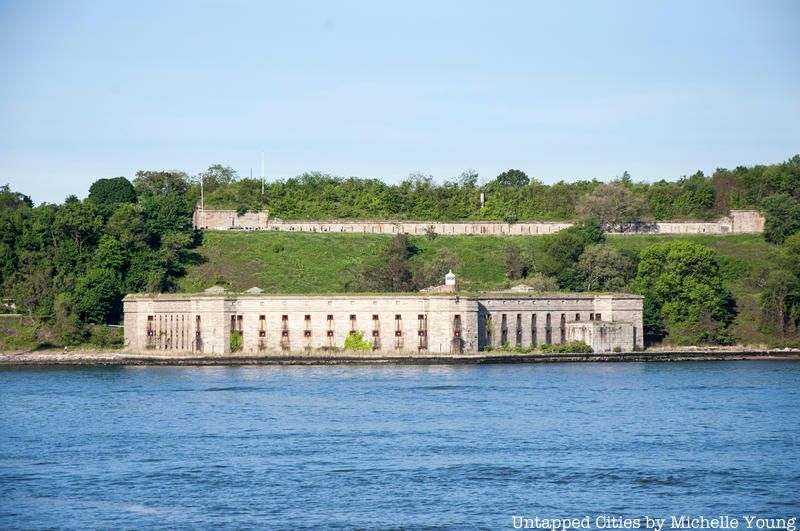
Staten Island may be New York City’s least populated borough, but it is still home to plenty of eerie sites. From abandoned hospitals to once-prosperous theaters, the borough holds a long list of abandoned places waiting to be discovered. The borough even has a lost graveyard for boats that is New York City’s only remaining commercial marine salvage yard. Here are 10 abandoned places to discover on Staten Island.
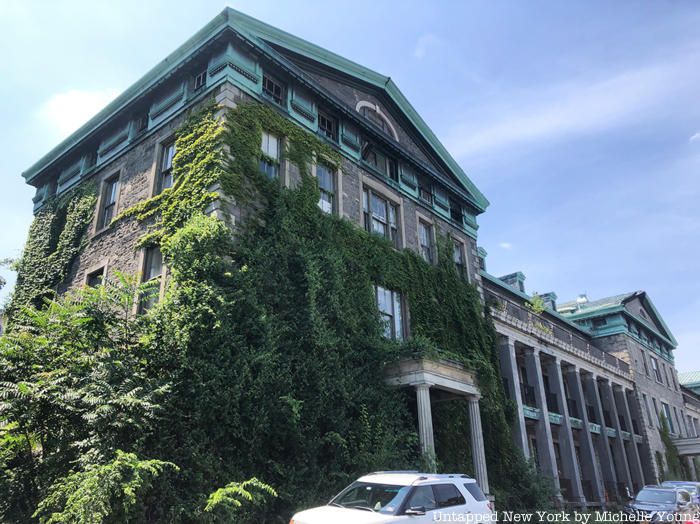
In the 1930s, Franklin Delano Roosevelt created public hospitals across the United States. But the history of medicine at this site on Staten Island dates far before these 20th-century efforts. Known originally as the Seaman’s Retreat, this site was one of two locations created for the recuperation of returning merchant seamen. The 36-acre parcel of land was purchased from the Cornelius Corson family, which had a farm here.
As for the main colonnade building of the Seaman’s Retreat, it still stands due to its landmark status, though the area around it is mostly used for car parking. In the warmer months, ivy almost completely covers the southern pavilion. Yet, the quality of the construction and materials speaks to the building’s relatively decent exterior condition — the granite ashlar material remains completely intact (albeit in need of a power washing). The copper pediment and frieze that frame the top of the pavilions and the dormer windows have protected the upper structures. A separate landmarked building, the Physician in Chief’s residence also still stands just around the corner from the northern pavilion.

One of the oldest military installations in the country, Fort Wadsworth occupies 226 acres of Staten Island’s northeastern shore on the Narrows of New York Harbor. It was fortified by the British in 1779 and served as the prime defensive location throughout the rest of the Revolutionary War. The original fort that stood was demolished and reconstructed as Fort Richmond between the years 1847 and 1862. In 1865, three years following its construction, the structure was renamed Fort Wadsworth in honor of Brevet Major General James Wadsworth.
Although the structure was occupied in some capacity until 1995, it was mostly left unused and eventually fell into disrepair. That same year, it was turned over to the National Park Service’s Gateway National Recreation Area. While its third system forts (Battery Weed and Fort Tompkins) are well maintained and partially occupied by the Coast Guard, Army Reserve, and Park Police, other sections are abandoned and remain off-limits to the public.
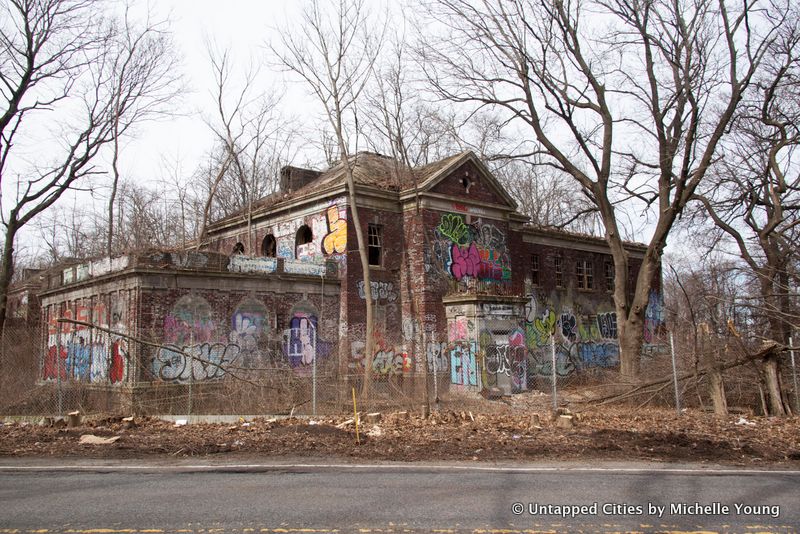
The Staten Island Farm Colony is a 46-acre site that was designed to provide housing for indigent populations in exchange for their labor. At its height in the 1940s, the Farm Colony had approximately 1,700 residents, including famous photographer Alice Austen.
Many dark stories are associated with The Staten Island Farm Colony: Bank robber, Willie Sutton, was once a city worker at the complex, and serial killer, Cropsey, was blamed for a 1920s abduction and murder of a seven-year-old boy on the grounds of the Farm Colony. This legendary site has laid vacant for almost 40 years but is being redeveloped into a multi-use complex with commercial space, and affordable/senior housing options.

The Paramount Theater in Staten Island’s Stapleton District first opened in October 1930 and served as one of the borough’s premiere theaters. The Art-Deco-style building could hold up to 2,300 patrons and was constructed on the site of Cornelius Vanderbilt‘s childhood farmhouse. Despite a major renovation in the 1960s, the theater eventually closed in 1977 and later reopened as a nightclub and then, briefly, as a concert venue. In 1980, however, it closed its doors permanently.
After the site was sold in 2008, restoration plans began in an effort to reopen the venue. However, the process stopped in 2010 and didn’t begin again until 2016 with the ultimate goal of turning the building into a restaurant, catering hall, and events venue; in the meantime, the site has served as the backdrop for many shows, including Gotham and Marvel’s The Defenders. Today, filmmakers can rent the space for filming.
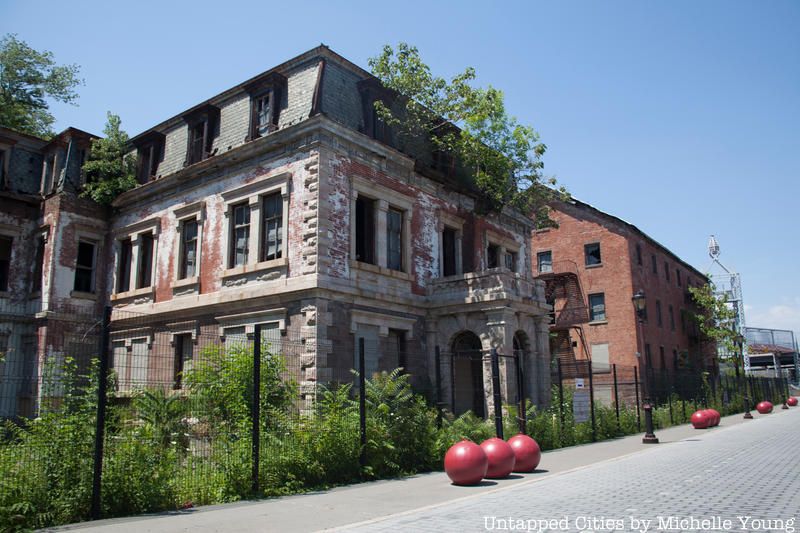
The National Lighthouse Museum opened in 2015 and sits on part of the complex that was once a part of the U.S. Light-House Establishment. Even before then, however, the site was home to the former Marine Hospital, known as The Quarantine, where 1,500 of the city’s diseased were housed.
When the U.S. Light-House Establishment took over the space, it constructed new buildings to serve the U.S. Lighthouse Service’s Third District until the Lighthouse Service was folded into the United States Coast Guard in 1939. After the Coast Guard relocated to Governors Island in the 1960s, the location was closed and was partially demolished and turned into the Staten Island ferry maintenance facility. Many buildings next to the museum, including the lamp shop, barracks, and administration building are still standing, but remain abandoned.
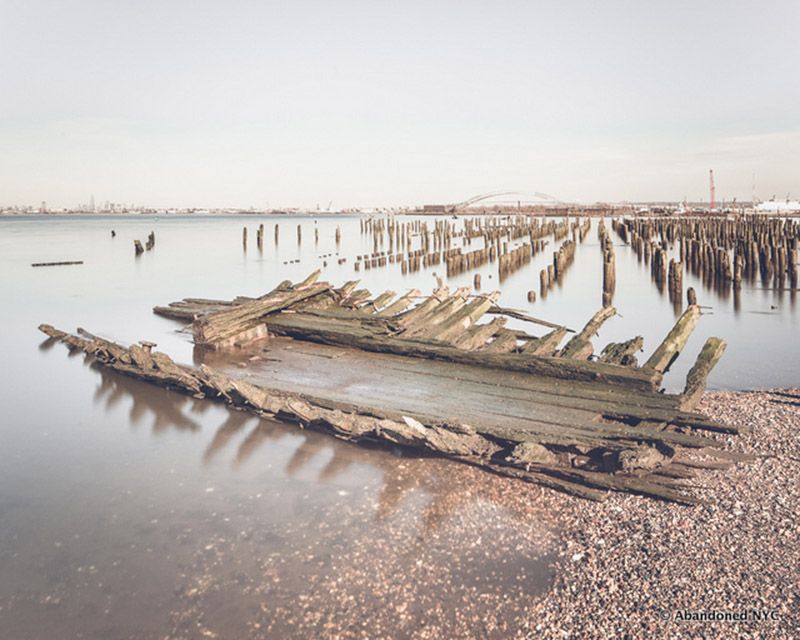
Mariner’s March on Staten Island is a place even the NYC Parks Department describes on their sign as “eerie.” Located just next to the New York Container Park, the forsaken and abandoned landscape was once the bustling Milliken Brother’s Structural Iron Works and later a shipyard that produced warships.
The marsh is overtaken by freshwater ponds and is littered with abandoned cars, boat hulls, and disintegrating piers that serve as a vague reminder of what the site once was. Adding to its elusiveness, though it has been operated by the parks department since its acquisition in 1997, it has been closed to the public for an environmental investigation since 2006
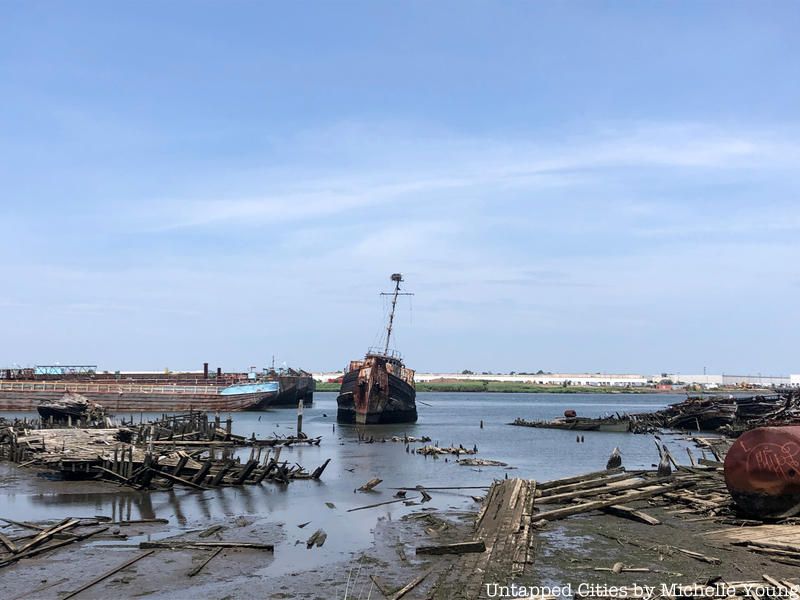
Located in Rossville, Staten Island, the Staten Island Boat Graveyard, also known as the Witte Marine Scrapyard, is New York City’s only remaining commercial marine salvage yard.
The Witte Marine Scrapyard was founded in the 1930s by John J. Witte and is now the “official dumping ground” for decomposing vessels, in addition to decommissioned tugboats, ferries, and barges. Despite its desolate location, the “accidental marine museum” is becoming one of New York City’s many tourist attractions.
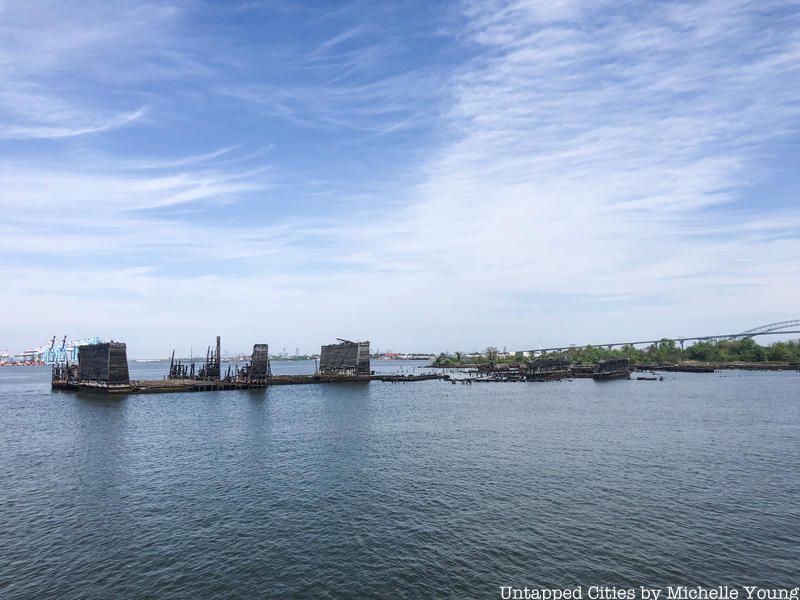
Just off of Staten Island, between Newark Bay and the Kill Van Kull, sits Shooter’s Island, a former hunting preserve for wild geese during the colonial era. After the Revolutionary War, this 43-acre island became an industrialized site with a shipyard and oil refinery. The Townsend-Downey Shipbuilding Company constructed yachts on the island, including a racing yacht for Kaiser Wilheim II and the schooner yacht, Atlantic, which set the record for the fastest transatlantic passage by a monohull in 1905.
Shooter’s Island then became a marine junkyard after World War I and was eventually abandoned by 1921. Now owned by the City of New York and maintained by the NYC Parks Department, the island remains one of NYC’s abandoned places to this day.
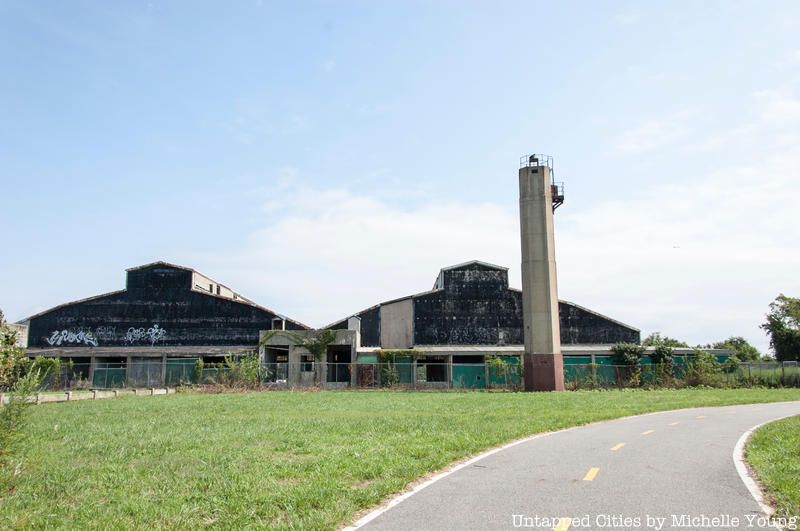
In New Dorp, Staten Island, on the southeastern waterfront of the borough is a decommissioned airfield used for half a century by the U.S. Army from 1919 to 1969. Part of the Gateway National Recreation Area today, Miller Field is one of those remaining anomalies: where formal activities co-exist side by side with quasi-accessible remnants of the past. Bicycle and pedestrian paths wind around abandoned hangars, a lighthouse, and a control tower. You can get tantalizingly close to the forgotten structures, despite a chain link fence. Graffiti work inside clearly shows the ease with which explorers can jump the barriers. Grass and weeds are growing around the hangars, while geese and ducks are bathing undisturbed in the makeshift urban ponds where seaplanes once taxied. On the northern area of the site, people are still living in adorable clapboard homes built for military personnel and their families.
Miller Field has the distinction of being the only Air Coast Defense station in New York City, and on the entire eastern seaboard. There were seven planned defense stations, but this was the only one actually constructed. Before its decommission, Miller Field was the last airport in New York City to have a grass runway. The land also has a very New York City, Gilded Age past. The airfield was built atop the family farm amassed by “Commodore” Cornelius Vanderbilt, who was born on the north shore of Staten Island. The farm, which also served as a horse breeding station, was later operated by his son George Washington Vanderbilt who built the Biltmore estate in Asheville, North Carolina. Washington Vanderbilt moved the 24-room home built by his father, dubbed the “white house” to the center of the farm in the early 1900s and lived there periodically until he died in 1914, according to the National Park Service.
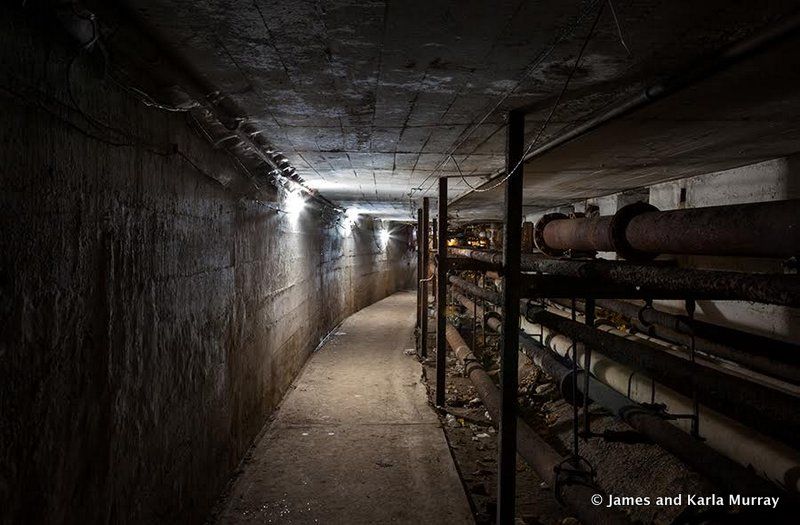
Seaview Hospital was once the largest tuberculosis sanatorium in the country. It is now listed on the U.S. National Register of Historic Places and is also a U.S. Historic District and New York City landmark. The historic district, which was developed next to the Staten Island Farm Colony, includes 37 buildings planned and developed between 1905 and 1938.
The NYC.gov website for the Sea View Hospital Rehabilitation Center & Home gives no indication of the surrounding abandonment, but indeed a few organizations have returned to operate from within the grounds, including a rehabilitation center, volunteer firefighting organization, and volunteer ambulance service. The photographic team of 9/11 took a visit inside the crumbling remains of the Children’s Hospital at Seaview, as well as the underground tunnels beneath the main building, and shared with us their photos.
Next, check out 10 abandoned places to discover in Manhattan, 9 abandoned places to discover in The Bronx, 10 abandoned places to discover in Queens, and 10 abandoned places to discover in Brooklyn!
Subscribe to our newsletter